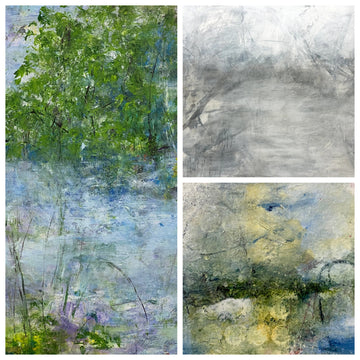
Lighting creates an essential impact on your artwork. While hanging on your wall as a decoration it must have a lighting effect to clarify its real textures and shades. Art collectors who are professional in this field have knowledge of lighting and how it enhances the artworks by influencing the mood, depth, and perception of the artwork.
In this blog we will be discussing how you can balance the light of your room, studio or workplace etc with your artwork so I not only looks appealing but also catches the eyes of your audience.
The Importance of art lighting
Before diving into the specifics of using light in artwork, it's essential to understand why light is so vital. Light is the fundamental element that allows us to perceive color, form, and texture. It creates shadows, highlights, and reflections that give depth and dimension to your art. The way light is manipulated can drastically change the way artwork is perceived and felt.
Types of art lighting
To effectively use types of lighting in artwork, you must first familiarize yourself with the different types of lighting art sources available to you. Here are some common types of lighting in art:
Natural art lighting: Sunlight is a powerful and dynamic light source that changes throughout the day and year. It can create beautiful effects on wall art through lighting, casting long shadows and providing a range of colors depending on the time of day.
Artificial art lighting: Artificial lighting art sources, such as lamps and studio lights, give more control over the lighting conditions. Wall art lighting can be adjusted to achieve specific effects, making them a valuable tool for art collectors.
Place your artwork according to your light source
Now that you're aware of the different light sources, let's explore how to control art display lighting and manipulate light to enhance your art decor lighting. The direction from which light hits your subject can significantly affect its appearance. Experiment with different angles to create dramatic shadows or highlight specific features.
Adjust the brightness of your light source to control the contrast in your artwork. High-intensity light can create bold and vibrant images, while low-intensity light can produce subtle and soft effects. The color of light also plays a crucial role in the artwork.
Different art decor lighting sources emit light with varying color temperatures, ranging from warm to cool. Consider how the color temperature can impact the mood and atmosphere of your piece. Incorporating reflective surfaces into your artwork can add depth and complexity. Experiment with materials like glass, water, or metallic objects to create intriguing reflections and refractions for your art display lighting.
Conclusion
In the world of art, light is not just a tool but a medium of expression. If you're an art collector or an interior designer, you should have the understanding to use light effectively because it can make the artwork reach to the new heights. Experiment with different light sources, angles, intensities, and color temperatures to create the best compositions that draws the viewers in on an emotional level.
As you go deeper into the art of light, you'll discover endless possibilities for enhancing your creative vision and leaving a lasting impression with the work. Remember that mastery of light is a lifelong journey, and each experiment brings you closer to unlocking its full potential in your artwork whether as an artist or as a collector.



